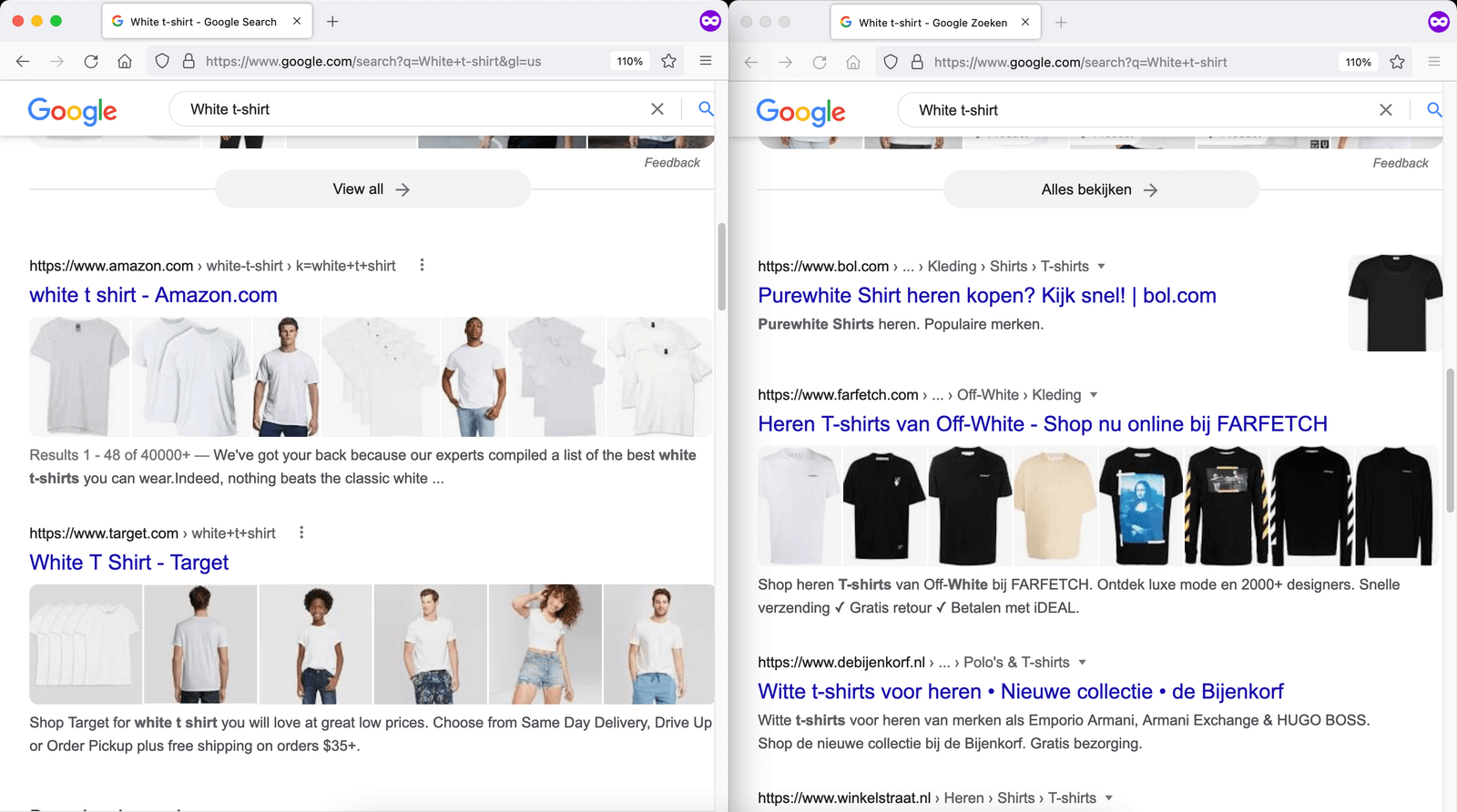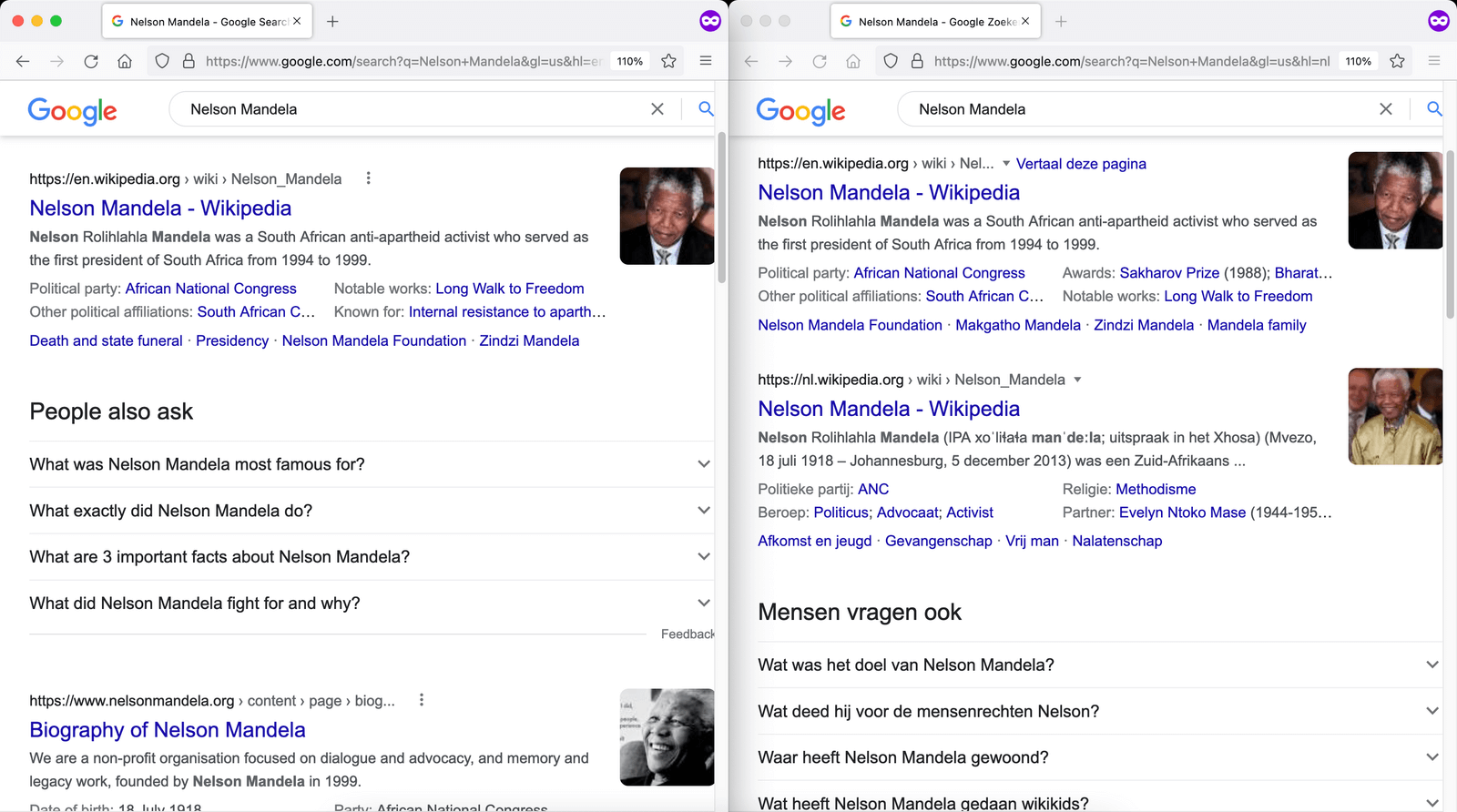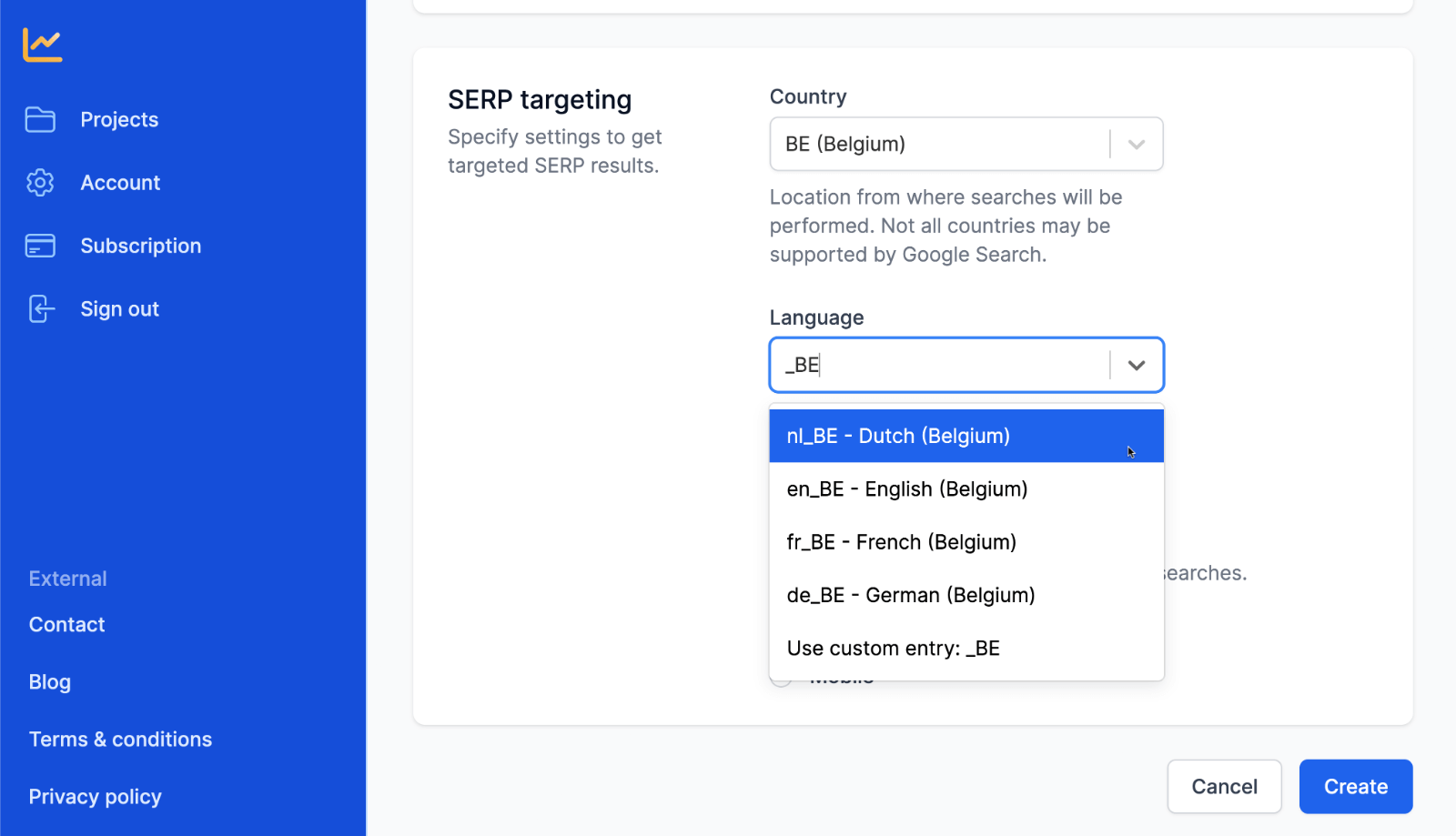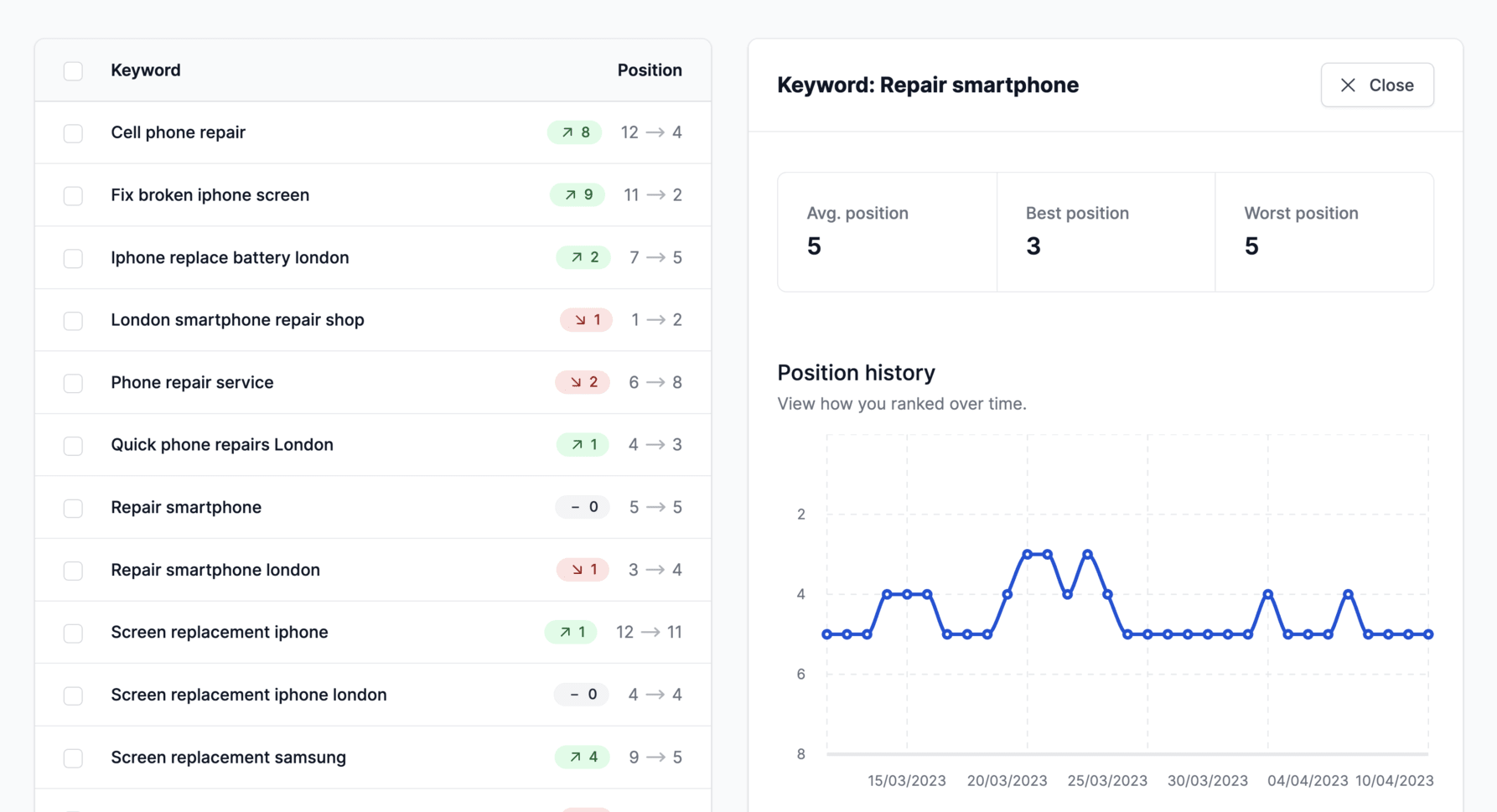Google searches from different countries give different SERP results. Google looks at your geolocation and interface language. In this blog post we will talk about them, their differences and how they affect your SEO and SERP position.
Geolocation
Geolocation, abbreviated as “gl”, is the geolocation of the end user that performs the search. This is the physical location from where the end user resides. For example, if you live in The Netherlands and you are performing a search, then your geolocation would be The Netherlands (NL). However, it can be changed so it wouldn’t be its real location. There are a few methods to do so.
The first method is to add the parameter “gl” to the Google search URL. For example, here's a plain Google search URL for "White t-shirt": https://www.google.com/search?q=White+t-shirt. Since I’m in The Netherlands, I get search results with Dutch shops that sell white t-shirts. Now, if I add the gl-parameter US (United Stated), like so: https://www.google.com/search?q=White+t-shirt&gl=us, I don’t get Dutch shops in the results, but shops from the USA.

Alternatively, you can use a VPN to change your location. That way you don’t have to set a gl-parameter. Because without it, Google determines your geographical location based on your IP-address.

Interface language
The interface language, otherwise known as home language and abbreviated as hl, is the interface language that the end user uses for Google. The interface language itself doesn’t affect the search results you get, generally.
For example, given the example from the previous section: https://www.google.com/search?q=White+t-shirt&gl=us. If we now add the interface language hl-parameter, we get: https://www.google.com/search?q=White+t-shirt&gl=us&hl=nl. Since we set it as “nl”, we see that the interface language is Dutch, but the results are still the ones from the United States.

However, in practice the results can slightly differ. This can especially be the case with featured snippets, the knowledge panel, the people-also-ask section, and news section. In the following example, you can see that the SERP is different for the same gl but with different hl values.

Position tracking with location & language
Manually checking your SERP positions for your website can be quite time consuming. And if you have a multi-language site it can even take more time. Luckily, we have added the option to select the country and language in our SERP tracking tool. That way you can target your results more accurately.

For more information about our SERP position tracker, check our Getting started guide.
Conclusion
Google’s geolocation and home location help you get local results. The geolocation (gl) is the geographical location of the end user. The home location, also known as the interface language (hl), is the language of the interface of Google that the end user uses. Making searches from different geographical location and languages result in different SERPs.









